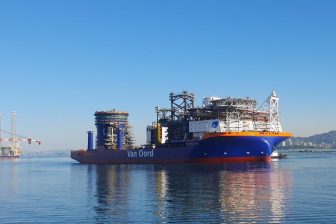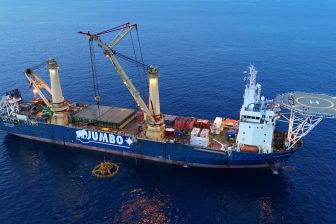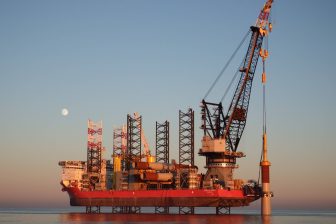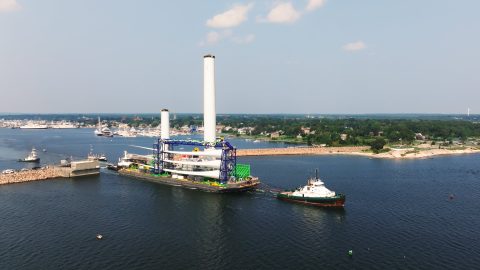
Jones Act compliant feeder system gets to work on Vineyard Wind
The Jones Act-compliant feeder solution developed by DEME and Barge Master has been put into action at the Vineyard Wind project off the coast of Cape Cod. The joint venture between Avangrid and Copenhagen Infrastructure Partners (CIP) has shipped the first GE Haliade-X Wind Turbine Generator (WTG) from the New Bedford Marine Commerce Terminal to its location more than 30 miles off the coast.
Foss Maritime has partnered with DEME Offshore US to design and build highly specialized US-flagged barges to transport the components to the lease area. The Marmac in New Bedford, Massachusetts, and the Foss Prevailing Wind in Boston, both 400 feet long, are the only two barges in existence capable of transporting in an upright position GE’s massive Haliade-X turbine components that when constructed will rise more than 700 feet.
The barges utilize a specially designed Barge Master technology that uses a patented control system and cylinders that support a platform and actively compensate for the motions of the barge. The wind turbine components are fastened to the motion-compensated platform for a smooth ride in ocean conditions.
“It may look easy, but the safe transportation of these components miles over the open water is no small feat,” said Vineyard Wind CEO Klaus S. Moeller. “While we’ve had many firsts, once this turbine is installed, it will stand as a proud symbol of America’s energy transition. I want to thank all of our partners for their continued collaboration and look forward to celebrating the progress of our industry.”
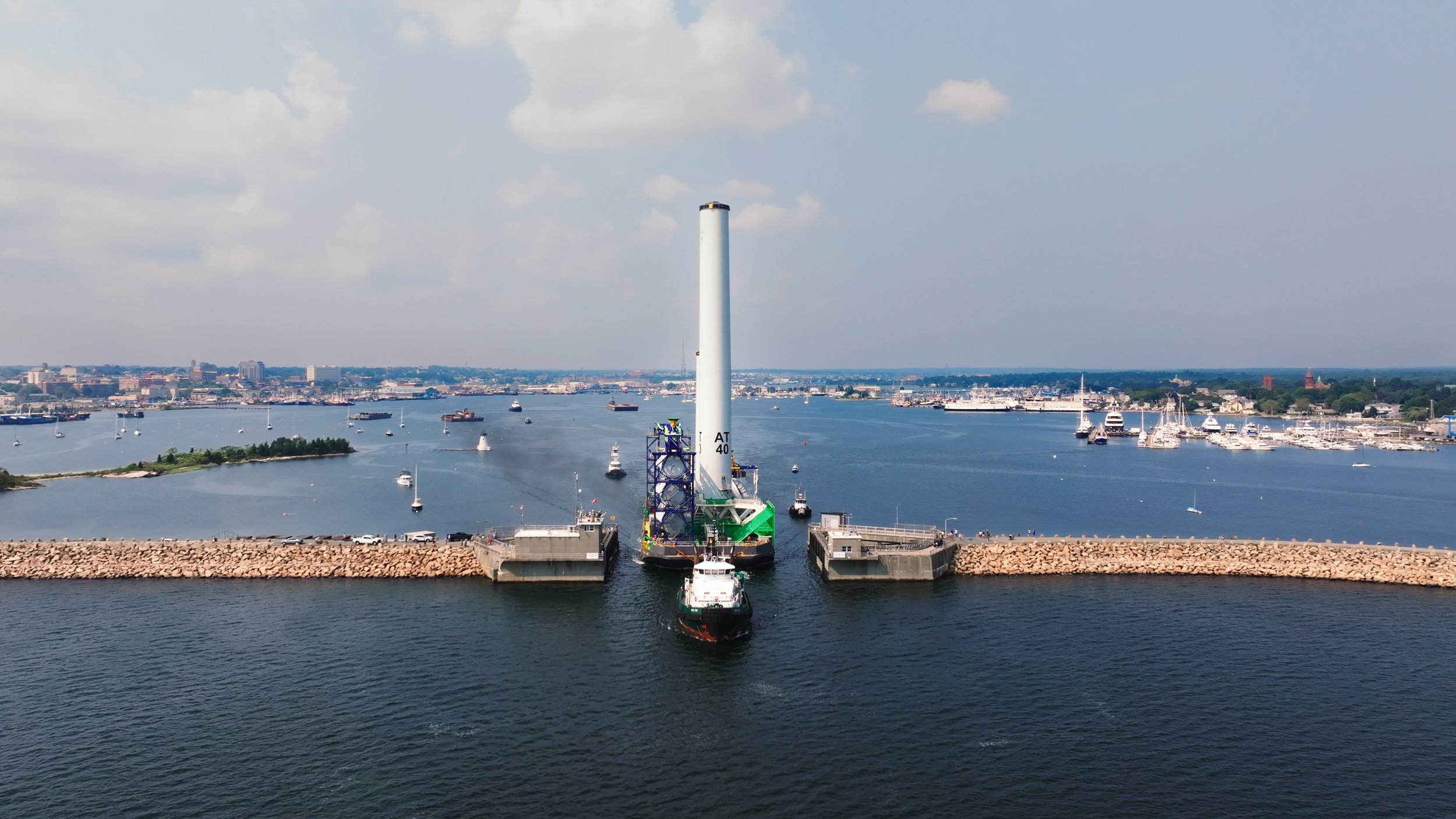
GE will initially load the U.S.-flagged Marmac from the New Bedford Marine Commerce Terminal with three vertically placed tower sections reaching more than 200 feet in height, three 321-foot-long blades and a nacelle pod that houses the generating components. Foss will deliver loads weighing more than 1,700 tons each, to construction partner DEME Group’s Sea Installer vessel with 300-foot-deep legs stationed 65 miles from New Bedford south of Martha’s Vineyard.
Sea Installer, which measures more than 430 feet in length and 150 feet wide, is a heavy lift jack-up crane vessel that lifts itself out of the water on legs that are over 300 feet in length. Once elevated, the vessel becomes a platform where the recently upgraded crane, now capable of lifting more than 1600 tons, can install the tower sections, nacelle and blades for each WTG.
An 800-megawatt project located 15 miles off the coast of Martha’s Vineyard, Vineyard Wind will generate electricity for more than 400,000 homes and businesses in the Commonwealth of Massachusetts, and is expected to reduce carbon emissions by more than 1.6 million metric tons per year, the equivalent of taking 325,000 cars off the road annually.
You just read one of our premium articles free of charge
Register now to keep reading premium articles.


